By the JFK Library Archives Staff
Archivists are often asked whether they have favorite items in their collections. While it is challenging to hone in on one, two, or even three favored documents, photos, etc. when you have literally millions of them, archivists do come across materials that capture their attention, for any number of reasons; and with thousands of boxes and containers to pore through, such “discoveries” are made on a regular basis.
As a way to share some of the varied gems that may be found in the Archives of the John F. Kennedy Presidential Library, members of the archival staff–with help from their Museum colleagues–have put together a new Archives “Staff Picks” display on the lobby level of the building. The display, which will rotate quarterly, includes commentary from staff on what makes the items special, from their perspective.
For those unable to come to the Kennedy Library, we offer a virtual look at selections from our first Staff Picks, in the order in which they are arranged in our lobby display (left to right, in vertical order). Enjoy.
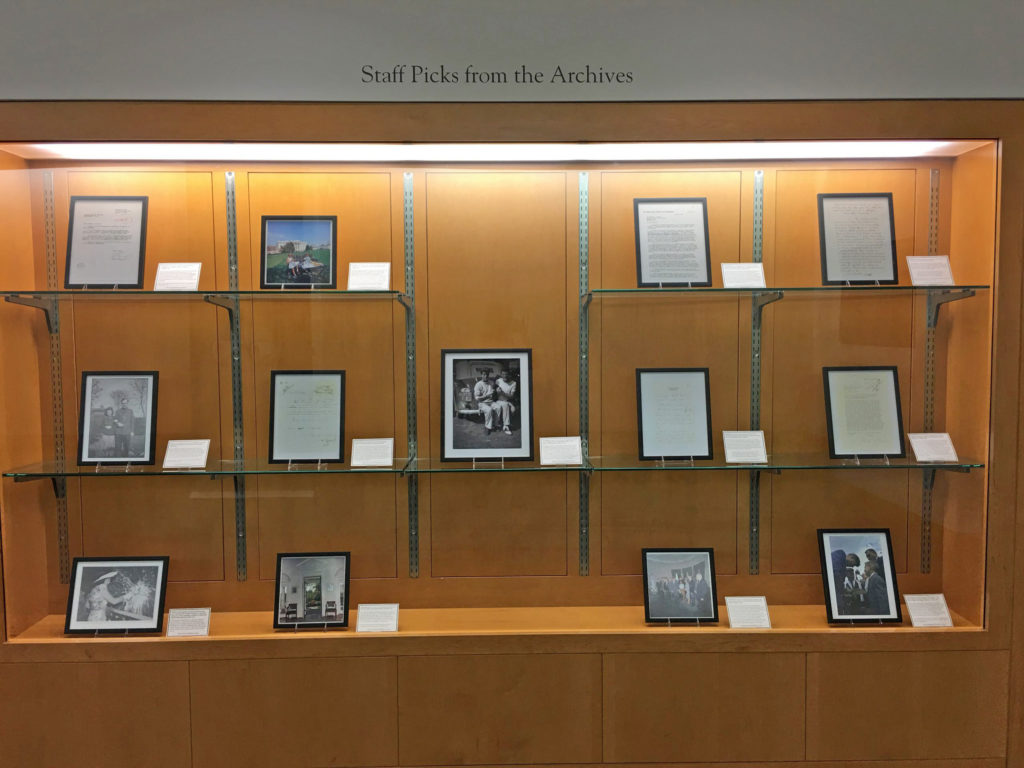
Staff Picks
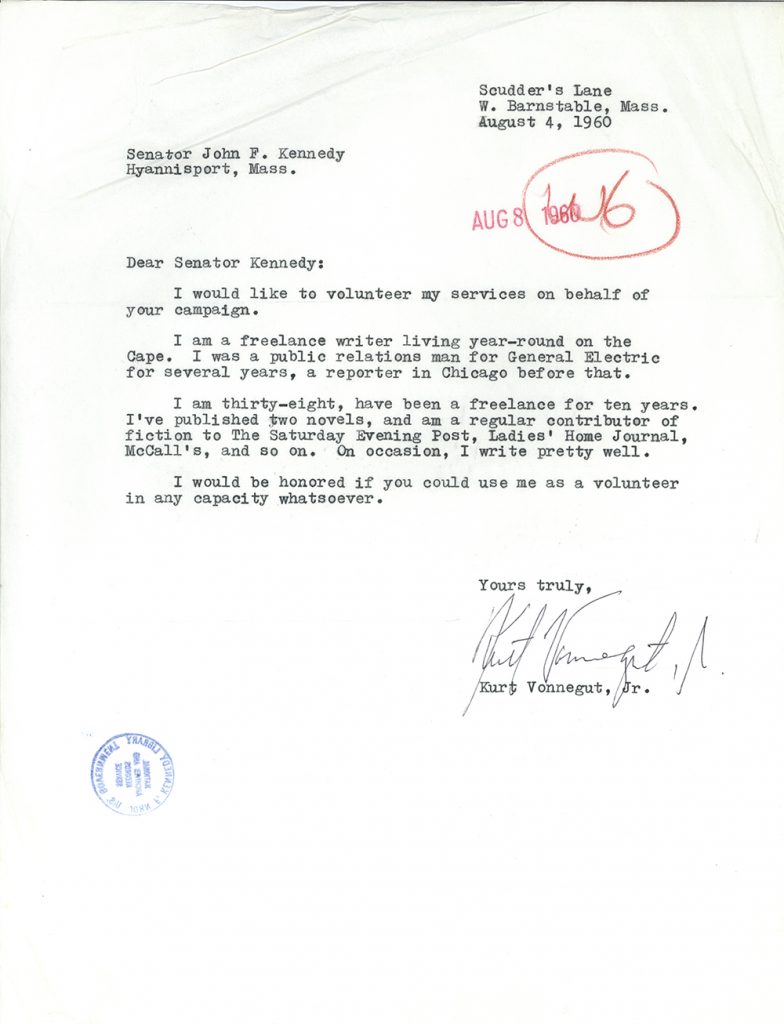
Searching for a letter a researcher wrote to John F. Kennedy during the 1960 presidential campaign led me to the “Massachusetts” folders in the 1960 Presidential Campaign Files, where this letter was filed away. Kurt Vonnegut had recently published his second novel, The Sirens of Titan, when he wrote to then-Senator Kennedy, introducing himself and offering his services during the 1960 presidential campaign.
The line that makes this one of my favorites: “On occasion, I write pretty well.”
–Stacey, Textual Reference Archivist
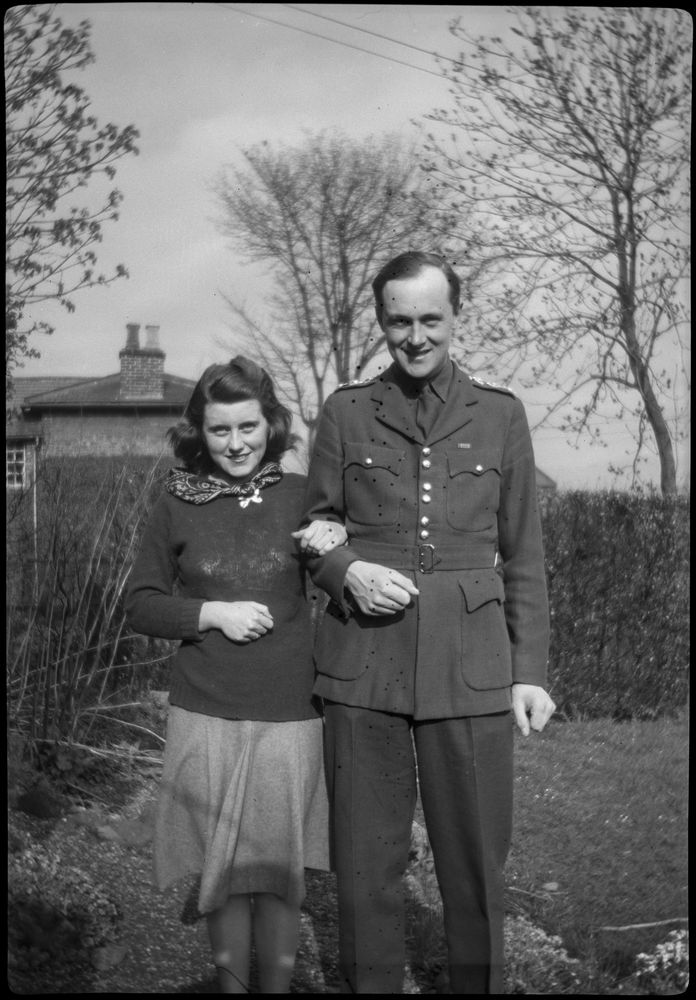
Here, Kathleen “Kick” Kennedy is pictured arm-in-arm with William “Billy” Cavendish, Lord Hartington, whom she married just weeks after this photo was taken. Sadly, Billy, a Major in the British Army during World War II, was killed in action several months later, in September 1944. Within less than four years, Kathleen Kennedy, Lady Hartington, would perish in a plane crash in France (May 1948).
I find this photo evocative; it captures a lovely if fleeting moment, frozen in time.
–Karen, Director of Archives
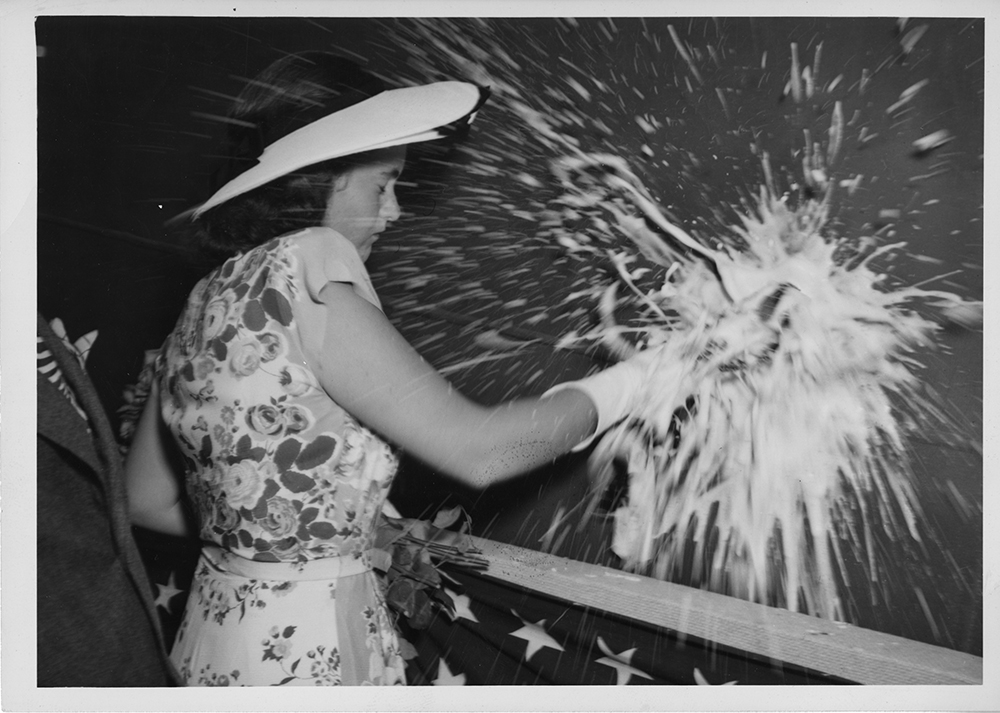
Commissioned in December 1945, this ship remained in service until 1973. Following its decommissioning, the destroyer went on display as part of a naval ships exhibit at Battleship Cove in Fall River, Massachusetts. The ship was named in honor of Jean and John F. Kennedy’s older brother, who lost his life while serving in the Navy during World War II.
–Bill, Audiovisual Metadata Cataloger
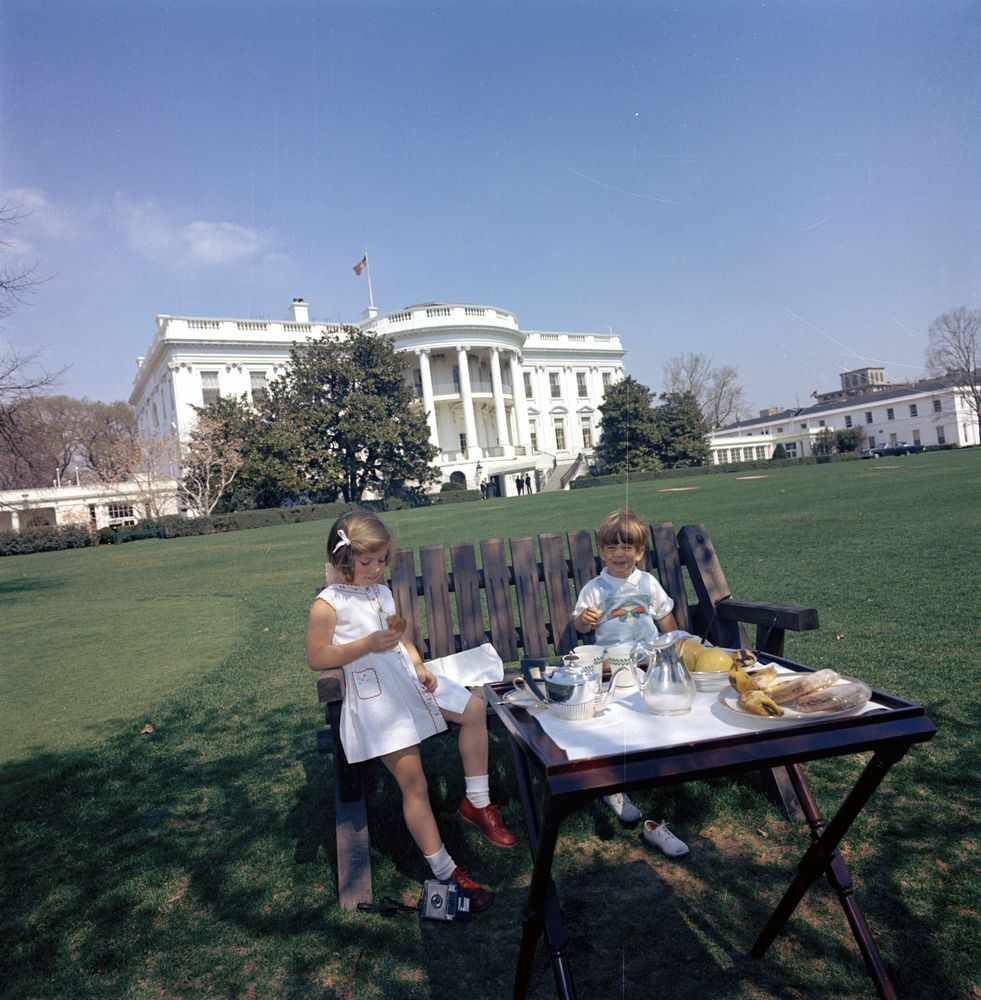
As a photographic metadata cataloger, I find that I gravitate toward the hidden details—spotting those objects in an image, such as books, newspapers, or toys that are often obscured by the main subject of the photograph but nevertheless represent the zeitgeist of the time. In this fun photo of the Kennedy children having a picnic on the South Lawn of the White House, a Kodak Brownie Fiesta camera (a simple point and shoot camera manufactured in the 1960s), sits in the grass at Caroline’s feet. It is easy to overlook this small object in the composition of the shot; and yet, it is evidence of contemporary technology and a family who enjoyed documenting themselves and others on film.
–Nicola, Photographic Metadata Cataloger
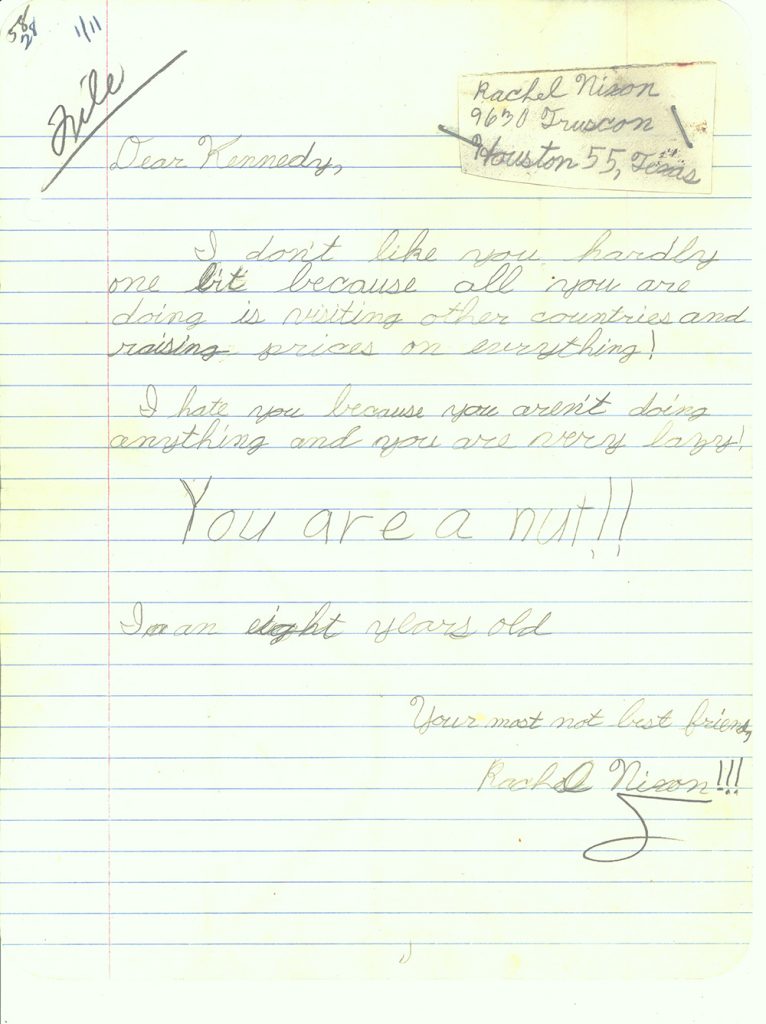
For the most part, the letters sent to President Kennedy from children are pretty friendly. However, this letter from eight-year-old Rachel Nixon is a different story. She does not hold back, telling him that she does not like him and finds him to be lazy. Since she is so young, you have to wonder if she is picking up what adults are saying around her in Texas. Even though this is an angry letter, because it is from a child it is somewhat amusing. No matter how many times I read this, I still laugh when I get to her sign off “your most not best friend.”
–Abbey, Processing/Textual Reference Archivist
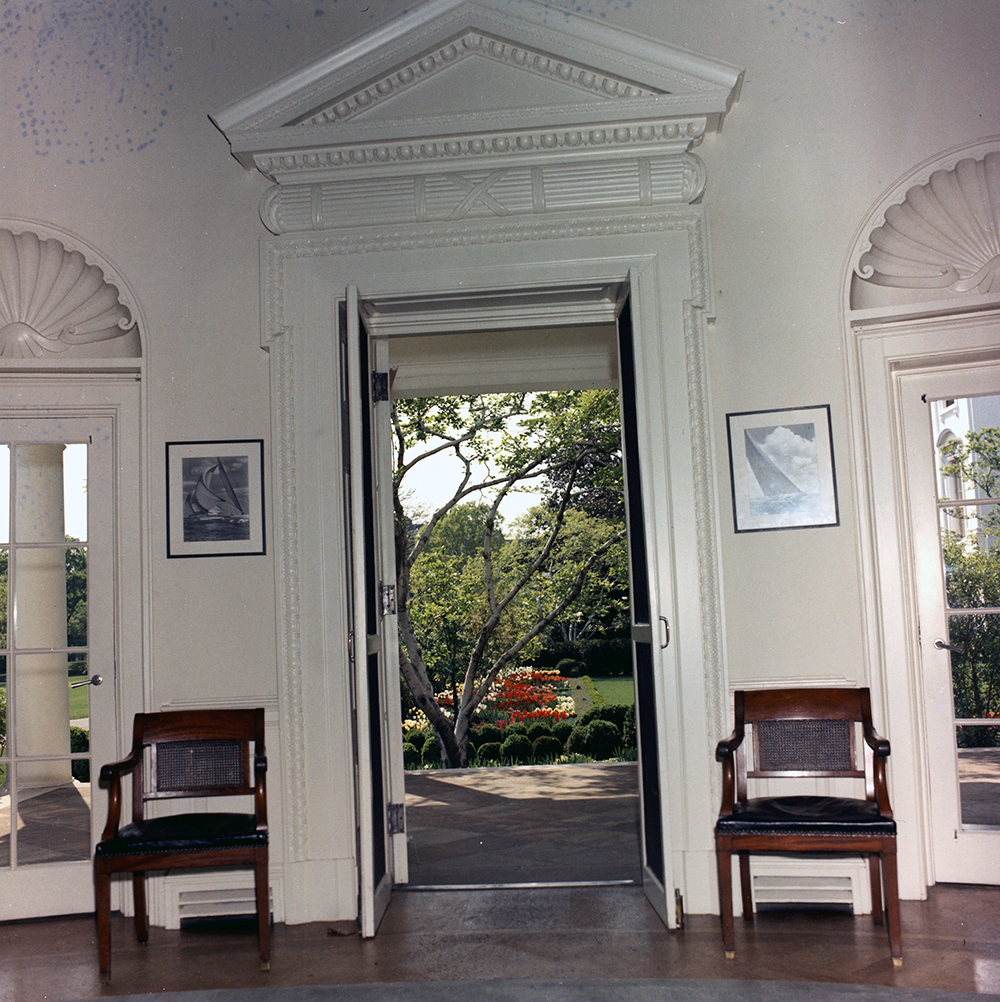
I love the composition of this photo, especially the depth of field. It feels as though one can walk through the doorway to an idyllic adventure. Keeping it down to earth are the fingerprints that appear on the negative, imprinted there during the still picture film negative development process. Since the negative is an archival item, we strive to capture it as is; we don’t edit out blemishes or imperfections.
This image reminds me that life is imperfect, but the invitation to find the beauty in it is always there.
–Maryrose, Audiovisual Reference Archivist
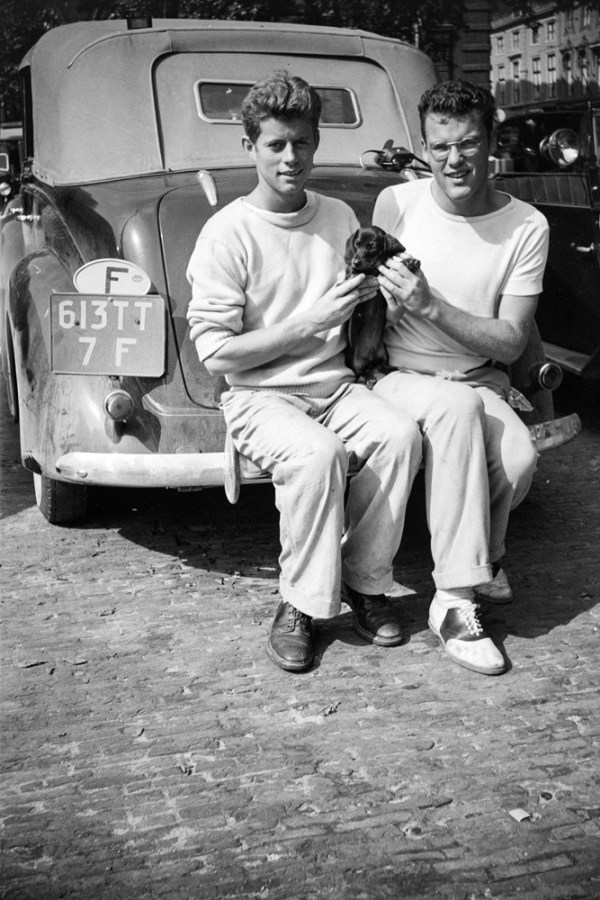
During the summer of 1937, Jack Kennedy and his friend Lem Billings traveled to Europe for an extended vacation. While in the Netherlands, they bought a dog, which they intended to deliver to a family friend in London. “Offie” or “Dunker”—as the dachshund was alternately known—proved to aggravate Jack’s allergies and the two were forced to find another home for the pet before traveling on. However, as this photo shows, Jack and Lem became quickly attached to Offie/Dunker and lavished much attention on the pup for the short time the three were together.
–Maryrose, Audiovisual Reference Archivist
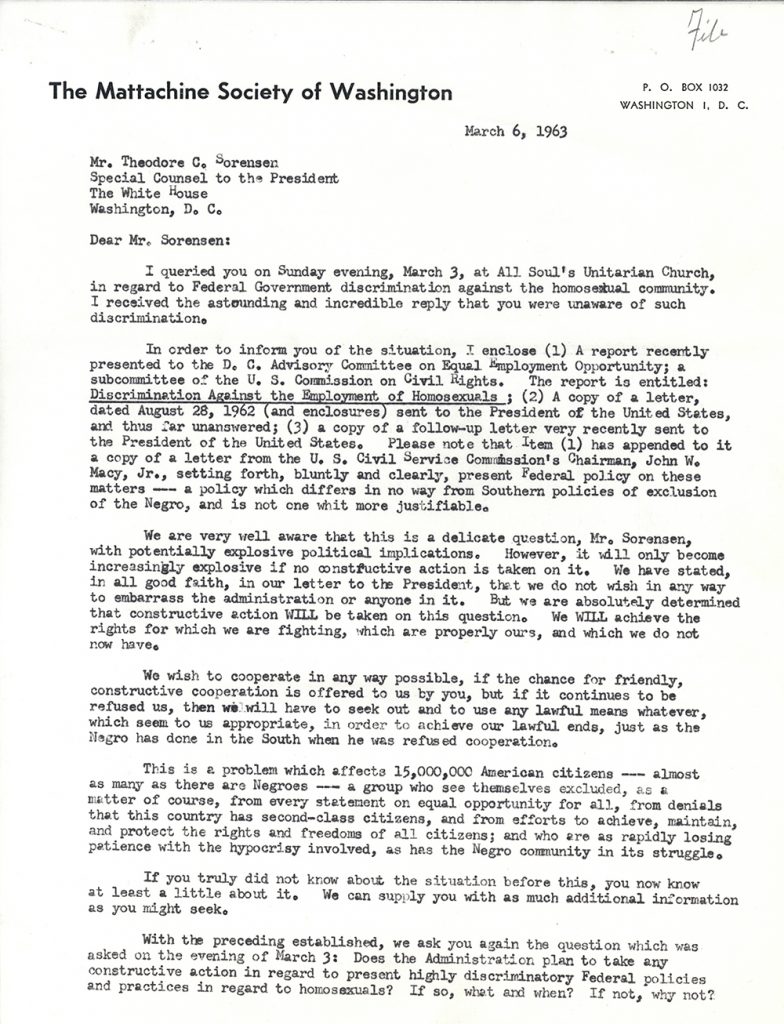
Constituent mail is my favorite archival material because it gives us glimpses into lives that can be hard to find documented. Dr. Frank Kameny was fired from his federal job in 1957 after his supervisors learned he was gay; he became an activist and regularly wrote to the President and his staff, including speechwriter Ted Sorensen, to advocate for his community. Because he wrote this and other letters, our archives now hold an important story in the history of the LGBTQ+ rights movement.
–Stacey, Textual Reference Archivist
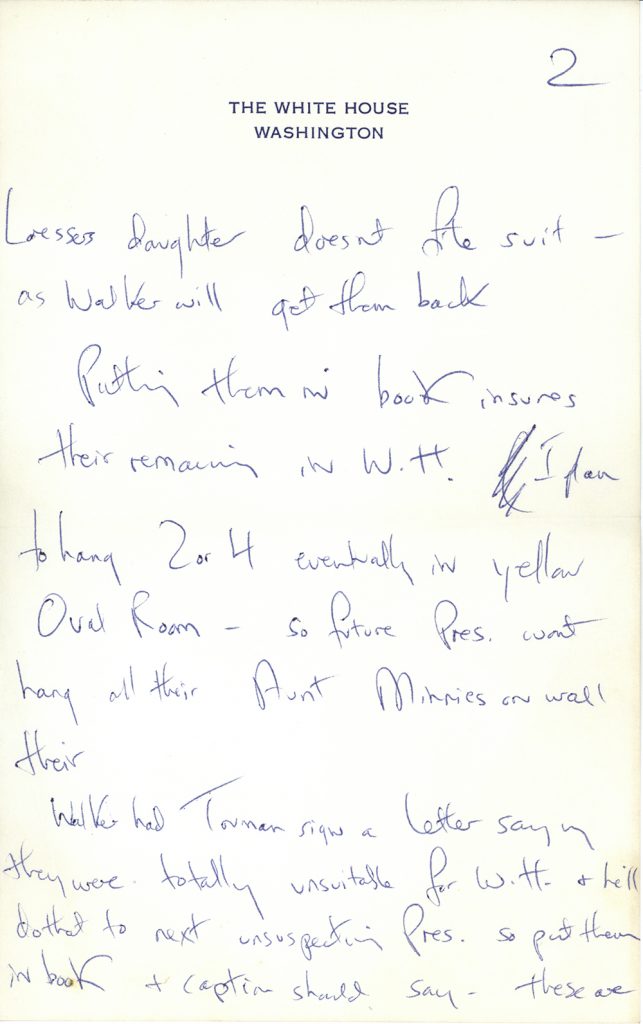
The First Lady’s detailed notes and memos to the White House curators provide evidence of her extensive work and influence on the redecoration of the White House, and her knowledge of the historic pieces within the White House collection. Notes like this one highlight the First Lady’s humor and wit, and her eye toward preserving the integrity of the White House historical collections:
“Putting them [Cezannes] in the book insures their remaining in W.H. I plan to hang 2 or 4 eventually in yellow Oval Room –so future Pres. won’t hang all their Aunt Minnies on wall.”
–Jenny, Processing/Oral History Archivist
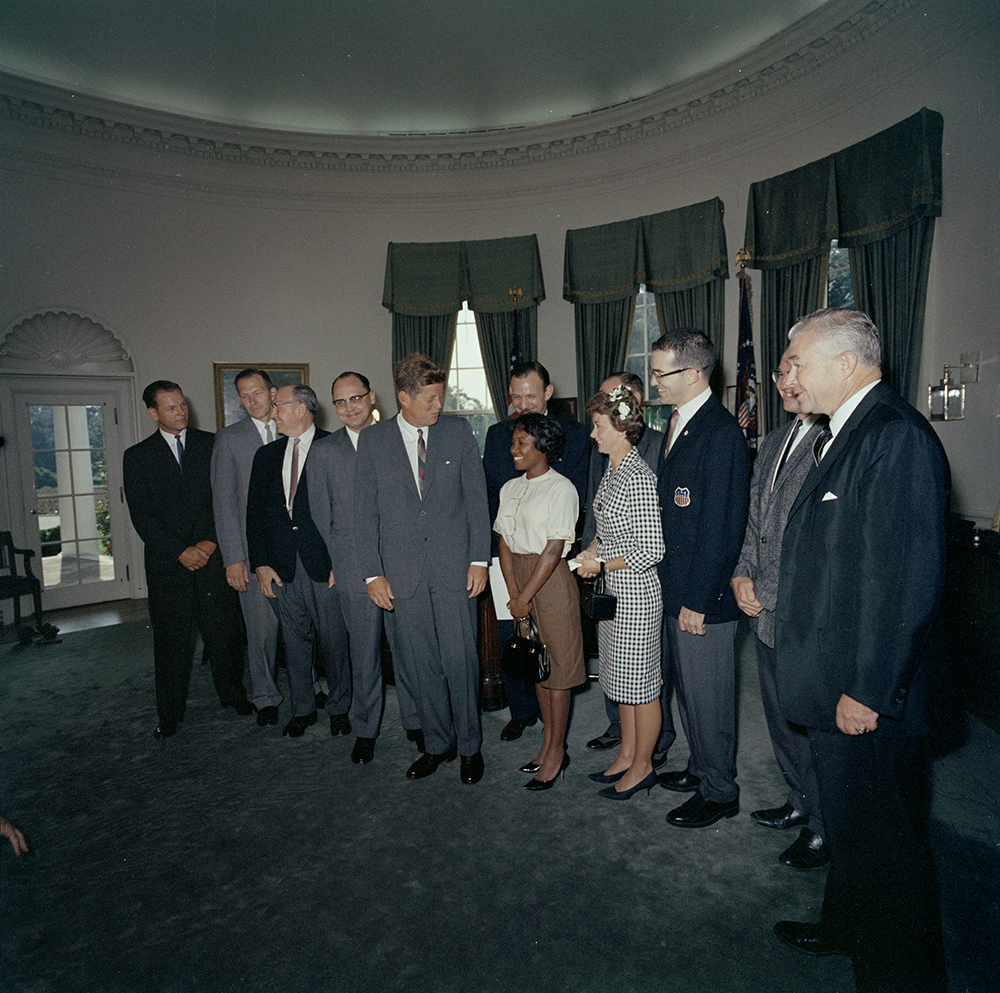
Growing up as a CODA (Child of a Deaf Adult), I was acutely aware of how little representation Deaf people had in the narrative of American history. The deaf community is a minority community, and it can often be hard to find archival documentation of deafness (beyond the well-known advocates like Helen Keller). This image captures a 1962 meeting between John F. Kennedy and representatives of the 10th International Games for the Deaf, including athletes who competed in the 1961 Games: Nancy Mahoney (swimming); John Miller (basketball); William Ramborger (javelin/triple jump); and Mary Lynch (long jump), who was the first African American to compete in the Games.
–Emily, Former Textual Reference Intern
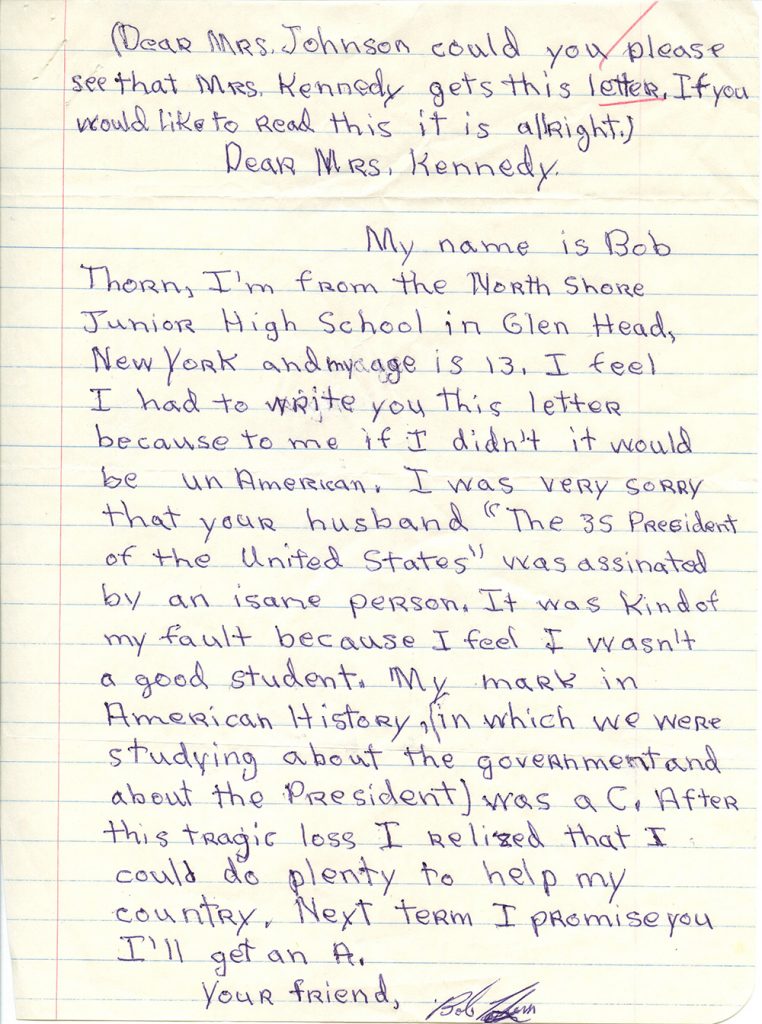
The prodigious condolence mail sent to Mrs. Kennedy following the President’s assassination highlights the level of personal grief the general public experienced over the death of the President. In this touching condolence letter, 13-year-old Bob Thorn writes to Mrs. Kennedy:
“I was very sorry that your husband ‘The 35 President of the United States’ was assinated by an isane person [sic]. It was kind of my fault because I feel I wasn’t a good student.”
The young writer goes on to promise Mrs. Kennedy that he will do better in school the next term.
–Jenny, Processing/Oral History Archivist

Like President Kennedy, Senator Edward M. Kennedy had a strong interest in immigration and refugee issues. Whether it was helping to reunite families or congratulating newly naturalized citizens, his office dedicated a significant amount of time to helping constituents navigate the federal immigration bureaucracy. Letters like this one demonstrate the power of our American ideals of liberty and equality. Six months after it was written, Senator Kennedy successfully shepherded a comprehensive immigration reform bill through Congress. Renate Andrews was born in Berlin, Germany, on May 7, 1925, and died in Spring Hill, Florida, on January 31, 2016.
–Christina, Processing Archivist

Eleven-year-old Joey Renzi wrote a letter to President Kennedy (typed in Braille, as he was blind) asking if he could meet the President during his trip through San Diego. Joey’s request was granted; in this photo, he stands at center and his younger brother, Johnny, stands at right. President Kennedy holds another letter, which Joey gave to the President in person. According to contemporary newspaper accounts, it read: “Thank you very much for letting me see you… I will treasure this experience all my life.”
I love this photograph because it documents a moment when President Kennedy stepped away from his “official” duties to greet a young admirer.
–Laura, Photographic Metadata Cataloger
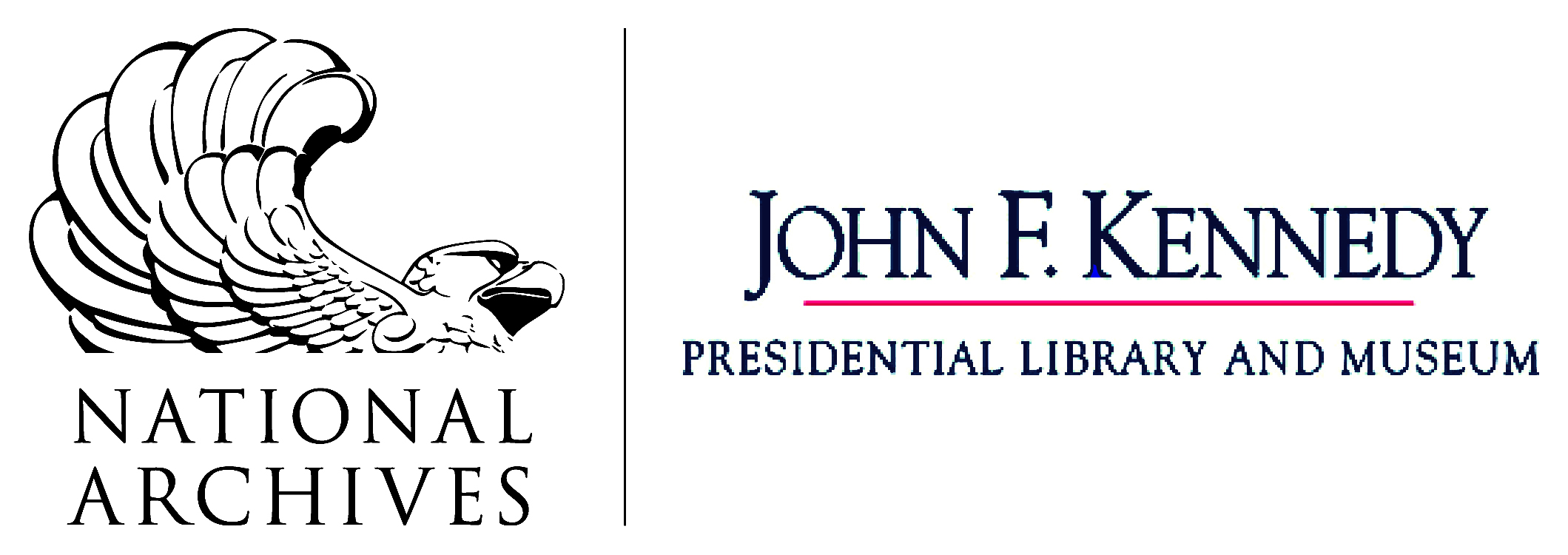
Thank you for sharing the pictures and letters. I knew the Kennedys were kind people, but these items truly confirmed their love of the American people.
[…] volunteered to work for John F. Kennedy’s campaign for president. On Aug. 4, 1960, he typed a letter to "Senator John F. Kennedy, Hyannisport, Mass." "I would like to volunteer my services on behalf of your campaign," he wrote. He described himself […]
[…] In our museum lobby here at the John F. Kennedy Presidential Library and Museum, we’ve recently started sharing some of the documents and images that catch our attention as we do our archival work. If you can’t make it to the Library to check them out in person, you can find our picks, along with the reason each archivist selected their item, here on our blog. We’ve got a lot of stuff to show you, so we’re rotating the display a few times per year. Here are our selections for the fall and winter season (and if you missed our first round, you can catch it here)! […]
[…] of our Archives Staff Picks! You will recall that our first display of staff picks highlighted staff favorites and the second centered around a holiday theme. Next up: Notable People. We love being able to […]
Do you have information about the lives of the children featured in this presentation?